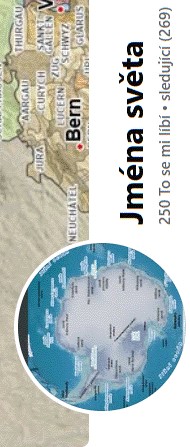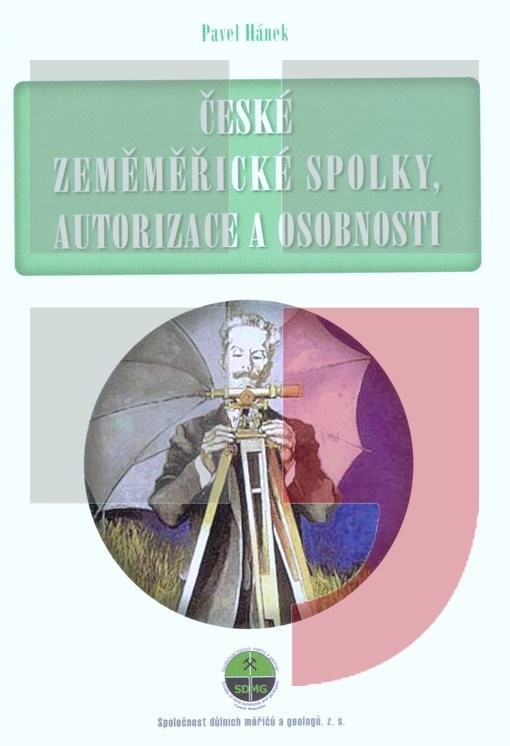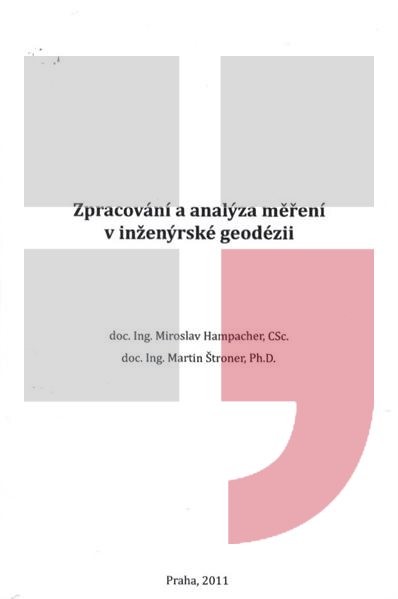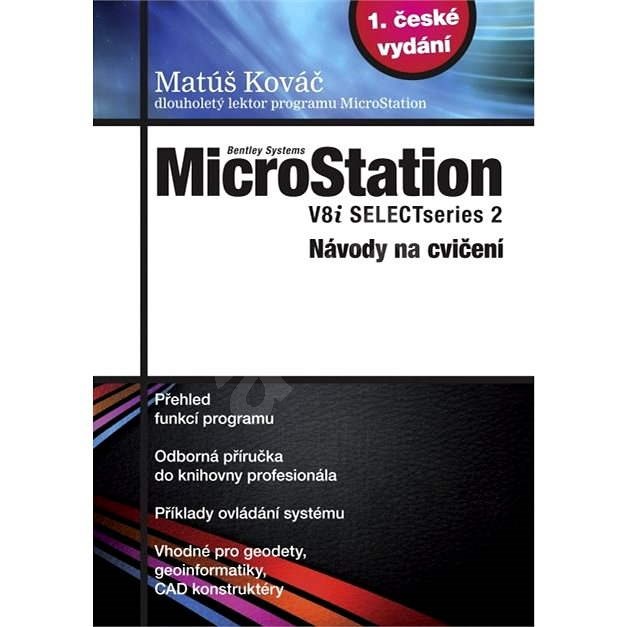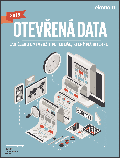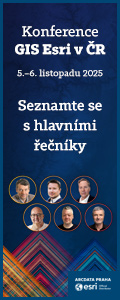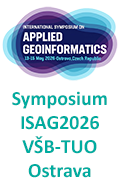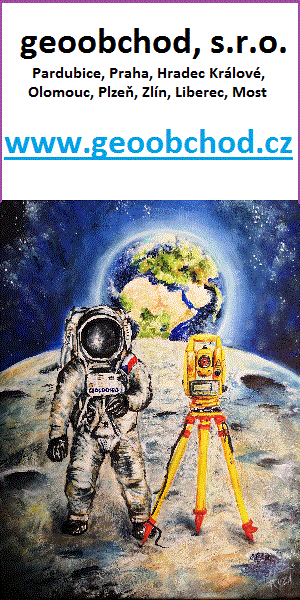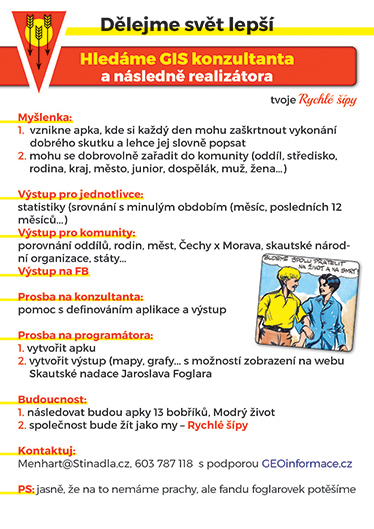zprávy
zdroje zpráv:Referent KN – 20170410
10.4.2017 8:26 ČÚZK /Urady/Katastralni-urady/Katastralni-urady/Katastralni-urad-pro-hlavni-mesto-Prahu/O-uradu/Aktuality/Referent-KN-–-20170410Referent KN – 20170410
10.4.2017 8:26 ČÚZK - předpisy a opatření Nově vyhlášená výběrová řízení na služební místa:Referent KN – poskytování informací KN (nahlížení, opisy, kopie)
Vrchní referent/rada – personalista
Referent KN – 20170410
10.4.2017 8:26 ČÚZK - předpisy a opatření Katastrální úřad pro hlavní město Prahu zveřejnil novou aktualitu: Nově vyhlášené výběrové řízení na služební místo:* Vrchní referent/rada – personalista
Vrchní referent/rada – personalista
10.4.2017 8:26 ČÚZK - předpisy a opatření Katastrální úřad pro hlavní město Prahu zveřejnil novou aktualitu: Nově vyhlášené výběrové řízení na služební místo:* Vrchní referent/rada – personalista
Vrchní referent/rada – personalista
10.4.2017 8:26 ČÚZK /Urady/Katastralni-urady/Katastralni-urady/Katastralni-urad-pro-hlavni-mesto-Prahu/O-uradu/Aktuality/Referent-KN-–-20170410Referent KN – 20170410
10.4.2017 8:26 ČÚZK - předpisy a opatření Nově vyhlášená výběrová řízení na služební místa:* Referent KN – poskytování informací KN (nahlížení, opisy, kopie)
* Vrchní referent/rada – personalista
Referent KN – 20170410
10.4.2017 8:26 ČÚZK - předpisy a opatření Nově vyhlášené výběrové řízení na služební místo:Referent KN – poskytování informací KN (nahlížení, opisy, kopie)
Vrchní referent/rada – personalista
Vrchní referent/rada – personalista
10.4.2017 8:10 ČÚZK - volná místa Katastrální úřad pro hlavní město Prahu, vypisuje výběrové řízení na místo Vrchní referent/rada – personalistavrchní referent/rada – personalista
10.4.2017 8:10 ČÚZK - volná místa Katastrální úřad pro hlavní město Prahu, vypisuje výběrové řízení na místo vrchní referent/rada – personalistaVrchní referent/rada – personalista
10.4.2017 8:10 ČÚZK - předpisy a opatření Katastrální úřad pro hlavní město Prahuvypisuje výběrové řízení na místo
Vrchní referent/rada – personalista
Vrchní referent/rada – personalista
10.4.2017 8:10 ČÚZK - předpisy a opatření Katastrální úřad pro hlavní město Prahuvypisuje výběrové řízení na místo
Vrchní referent/rada – personalista
Vrchní referent/rada – personalista
10.4.2017 8:10 ČÚZK - volná místa Katastrální úřad pro hlavní město Prahu, Katastrální pracoviště Praha vypisuje výběrové řízení na místo Vrchní referent/rada – personalistavrchní referent/rada – personalista
10.4.2017 8:10 ČÚZK /Urady/Katastralni-urady/Katastralni-urady/Katastralni-urad-pro-hlavni-mesto-Prahu/Uredni-deska/Oznameni-a-jina-uredni-sdeleni/Volna-mista/vrchni-referent-rada-–-personalistaVrchní referent/rada – personalista
10.4.2017 8:10 ČÚZK /Urady/Katastralni-urady/Katastralni-urady/Katastralni-urad-pro-hlavni-mesto-Prahu/Uredni-deska/Oznameni-a-jina-uredni-sdeleni/Volna-mista/vrchni-referent-rada-–-personalistaVrchní referent/rada – personalista
10.4.2017 8:10 ČÚZK - předpisy a opatření Katastrální úřad pro hlavní město Prahu Katastrální pracoviště Prahavypisuje výběrové řízení na místo
Vrchní referent/rada – personalista
Referent KN – poskytování informací KN (nahlížení, opisy, kopie)
10.4.2017 8:08 ČÚZK - předpisy a opatření Katastrální úřad pro hlavní město Prahu Katastrální pracoviště Prahavypisuje výběrové řízení na místo
Referent KN – poskytování informací KN (nahlížení, opisy, kopie)
Referent KN – poskytování informací KN (nahlížení, opisy, kopie)
10.4.2017 8:08 ČÚZK - volná místa Katastrální úřad pro hlavní město Prahu, Katastrální pracoviště Praha vypisuje výběrové řízení na místo Referent KN – poskytování informací KN (nahlížení, opisy, kopie)ČGS – Cestovatelský úterek 11. 4. 2017 (Patagonie)
10.4.2017 7:53 Katedra geografie UP Olomouc Zveme Vás na přednášku v cyklu Cestovatelské úterkyPatagonie a Ohňová země: Fin del Mundo – na konci světa
která se uskuteční v úterý 11. dubna 2017 od 18.30 do 20.00 na učebně LP 2005. Přednáší Zdeněk Špíšek (pozvánka).
ČGS – Blok expertů MRS 12. 4. 2017
10.4.2017 7:46 Katedra geografie UP Olomouc Zveme Vás na přednášku v rámci Bloku expertů MRSIs there a place for sport in international development?
která se uskuteční ve středu 12. dubna 2017 od 15.00 do 16.30 na učebně LP 5007 Přírodovědecké fakulty UP. Přednáší prof. Cora Burnett (pozvánka).
TopGis hledá zaměstnance na podporu obchodu
10.4.2017 7:00 Česká asociace pro geoinformace Společnost TopGis, s.r.o. (mj. dodavatel portálu mapy.cz) s hlavní kanceláří v Brně hledá zaměstnance na pozici Podpora obchodu.Pracovní náplň:
aktivní spolupráce s oddělením obchodu a účetním oddělením. Evidence přehledu aktuálních a uskutečněných projektů a související dokumentace. Finalizace projektů a příprava podkladů k fakturaci
podpora obchodu v
GIS Esri v ČR - první informace
10.4.2017 7:00 Česká asociace pro geoinformace Letošní ročník konference GIS Esri v ČR se uskuteční ve dnech 8. a 9. listopadu 2017 v Kongrsovém centru Praha. Prvním důležitým termínem je 30. červen 2017, do kterého je nutné přihlásit přednášku. Účastníci mohou k přihlášení použít webový formulář.Veškeré další potřebné informace samozřejmě naleznete na konferenčním
Nová aplikace Blokové čištění komunikací v Ústí nad Labem
10.4.2017 7:00 Statutární město Ústí nad Labem Oddělení GIS ve spolupráci s odborem dopravy a majetku připravilo novou mapovou aplikaci Blokové čištění komunikací v Ústí nad Labem. Aplikace v přehledné mapové podobě zobrazuje kalendář termínů blokového čištění jednotlivých komunikací ve městě. Aktualizace aplikace bude probíhat vždy při vyhlášení nového kola blokového čištění odborem dopravy a majektu. Komunikace se společným termínem čištění jsou vyznačeny vždy shodnou barvou. Přiblížením mapy nad zájmovou ulici lze zjistit termín čištění (v popisku ulice). Termín čištění lze zjistit také kliknutím na linii komunikace. Aplikace je uspořádána do záložek dle jednotlivých kol plánu blokového čištění. V aplikaci lze pohodlně vyhledávat dle ulic, adres i parcel. Na výběr je několik podkladových map.ZŠ Zlaté Hory hledá učitele
10.4.2017 6:41 Katedra geografie UP Olomouc Základní škola ve Zlatých Horách hledá učitele zeměpisu s nástupem od září 2017. Dotazy na další informace a nabídky zasílejte řediteli školy (kontakt viz web školy).Výuka KGG/GMOR, GMFO Geomorfologie 11. a 18. 4. 2017
10.4.2017 6:38 Katedra geografie UP Olomouc V úterý 18. dubna 2017 neproběhne přednáška KGG/GMOR, GMFO Geomorfologie (doc. Smolová) z důvodu služební cesty vyučující a bude nahrazena přednáškou konanou v úterý 11. dubna 2017 od 8:15 na učebně LP 2005 (11. 4. 2017 tak proběhnou dvě přednášky za sebou).Doktorské studium didaktiky geografie – PdF MU
10.4.2017 6:31 Katedra geografie UP Olomouc Kolegové z Brna předávají informaci o nové možnosti doktorského studia didaktiky geografie na PdF MU – podrobnosti zde (PDF 525 kB).WMS INSPIRE Habitaty
10.4.2017 2:00 Cenia - Katalog metadat ČR - INSPIRE Služba zobrazuje rozšíření typů přírodních stanovišť v polích síťového mapování (síť ETRS, pole 10 x 10 km) v České republice. Publikován je stav k roku 2013. © AOPK ČRISKO - databáze chemického složení srážek
10.4.2017 2:00 Cenia - Katalog metadat ČR - INSPIRE V roce 2015 byla do databáze Informačního systému kvality ovzduší ISKO dodána data o chemickém složení atmosférických srážek celkem ze 43 lokalit (16 lokalit, na kterých zajišťuje měření ČGS, 14 ČHMÚ, 7 VÚLHM a 6 HBÚ AV ČR). Dále byla také dodána data z 4 německých lokalit (organizace LfULG) a 6 polských lokalit (organizace GIOS) v příhraničních oblastech. Stanice ČHMÚ a LfULG měří ve většině případů čisté srážky v týdenním intervalu (z měsíčního intervalu na týdenní přešla v roce 1996 v souladu s mezinárodní metodikou EMEP). Dále byly od roku 1997 do roku 2010 prováděny týdenní odběry srážek typu „bulk“ (s blíže nedefinovatelným obsahem prašného spadu) na analýzu těžkých kovů. Od roku 2011 se analýzy těžkých kovů provádějí na stanicích ČHMÚ z čistých srážek, odběry typu „bulk“ byly zrušeny. Na lokalitách ostatních organizací se měří v měsíčních (popř. nepravidelných) intervalech koncentrace ve srážkách typu „bulk“ na volné ploše (popř. pod korunami stromů). Detailní údaje o jednotlivých lokalitách a typech odběrů jsou uvedeny zde http://portal.chmi.cz/files/portal/docs/uoco/isko/grafroc/15groc/gr15cz/tab/tabIX4_CZ.html.ISKO - imisní databáze
10.4.2017 2:00 Cenia - Katalog metadat ČR - INSPIRE Koncentrace naměřené všemi monitorovacími sítěmi jsou ukládány do imisní databáze Imisní informační systém (IIS). V IIS jsou archivovány údaje již od počátku měření, koncentrace oxidu siřičitého a suspendovaných částic ze staničních sítí ČHMÚ v severních Čechách, v Praze a v aglomeraci Ostrava/Karviná/Frýdek-Místek již od roku 1969. S imisními daty jsou do imisní databáze ukládána i doprovodná meteorologická data, která jsou měřena na velké části automatizovaných imisních stanic ČHMÚ a jsou využívána pro hodnocení imisně-meteorologických vztahů. Imisní databáze ISKO zahrnuje kromě výsledků měření ČHMÚ, které zajišťují pracovníci Imisního monitoringu v centru i na pobočkách, i data poskytovaná spolupracujícími institucemi. Jedná se zejména o zdravotní ústavy, ČEZ, a. s., Výzkumný ústav lesního hospodářství a myslivosti, v.v.i., Českou geologickou službu, Hydrobiologický ústav, městské úřady a další přispěvatele. V databázi jsou též zahrnuty informace z příhraničních oblastí Německa, Polska a Rakouska.Registr emisí a stacionárních zdrojů (REZZO)
10.4.2017 2:00 Cenia - Katalog metadat ČR - INSPIRE Metodický rozvoj a každoroční celorepublikové zpracování a vedení archivu emisní databáze zajišťuje ČHMÚ. V časové řadě počínající rokem 1984 jsou v rámci emisní části ISKO archivovány vykazované roční emisní údaje a doprovodné technické údaje nejvýznamnější skupiny provozoven (dříve REZZO 1). Od 90. let minulého století jsou součástí databáze rovněž údaje zdrojů zařazených předchozí legislativou mezi tzv. střední zdroje znečišťování ovzduší (dříve REZZO 2). Sběr ohlašovaných údajů stacionárních zdrojů, vymezených v příloze č. 2 k zákonu o ochraně ovzduší, je prováděn prostřednictvím Integrovaného systému plnění ohlašovacích povinností, zavedeného zákonem č. 25/2008 Sb. Rozdělení provozoven do kategorií REZZO 1 a REZZO 2 je vytvořeno podle formy ohlášených údajů souhrnné provozní evidence za rok 2015, kde bylo pro cca 41 % hlášení využito tzv. zjednodušené formy (příloha č. 11 vyhlášky č. 415/2012 Sb.).Pro potřeby bilance emisí z lokálního vytápění domácností je od roku 1997 používána metodika založená na údajích ze Sčítání lidu, domů a bytů (SLDB). Údaje ze SLDB jsou každoročně aktualizovány ve spolupráci s regionálními dodavateli paliv a energií. Konečným výstupem modelu jsou údaje o emisích znečišťujících látek a palivové skladbě domácích topenišť na úrovni jednotlivých obcí, které jsou obsaženy v databázi REZZO 3. Vedle lokálního vytápění domácností jsou v databázi REZZO 3 dopočítávány údaje o emisích z dalších stacionárních zdrojů, nevyjmenovaných v příloze č. 2 zákona o ochraně ovzduší, mezi které patří plošné použití rozpouštědel, zemědělské a stavební činnosti. Bilance emisí mobilních zdrojů (REZZO 4) zahrnuje silniční, železniční, vodní a leteckou dopravu a provoz zemědělských, lesních a dalších strojů.A048 -Vodní nádrž - ÚAP 2016
10.4.2017 2:00 Cenia - Katalog metadat ČR - INSPIRE A048 - Informace o jevu Vodní nádrž ve správním obvodu ORP Moravské Budějovice dle zákona č.183/2006 Sb.Poskytovatelé : Výzkumný ústav vodohospodářský T.G.M., IČ: 20711, Ministerstvo zemědělství, IČ: 200478Úspěch v soutěži Společné zařízení roku
10.4.2017 0:00Oddělení pozemkových úprav naší společnosti slaví úspěch v soutěži Státního pozemkového úřadu a Českomoravské komory pro pozemkové úpravy "Společné zařízení roku".
V soutěži byla oceněna realizace protipovodňových opatření v katastrálním území Hněvnice, a to druhým místem v konkurenci celkem patnácti projektů realizovaných v průběhu roku 2016.
Ocenění bylo předáno na slavnostním vyhlášení výsledků soutěže dne 23. března v prostorách Senátu Parlamentu České republiky.
Odborný referent oddělení účetnictví, odbor ekonomický
10.4.2017 0:00 Státní pozemkový úřad Státní pozemkový úřadu přijme zaměstnance na pozici odborný referent oddělení účetnictví, odbor ekonomický.Modely prostorových dat v GIS: od 2D k 3D [Katedra aplikované geoinformatiky a kartografie, byTopic]
9.4.2017 9:00 Katedra aplikované geoinformatiky a kartografie Přf UK Čánek Mgr. Lukáše Brůhy, Ph.D. z katedry aplikované geoinformatiky a kartografie v časopise Geografické rozhledy č. 4, ročník 26 s titulem Mosty do Evropy.Nepřítomnost P. Šimáčka 10.–14. 4. 2017
8.4.2017 13:43 Katedra geografie UP Olomouc Z důvodu zahraniční pracovní cesty nebude Petr Šimáček v týdnu od 10. do 14. dubna 2017 přítomen na katedře. Studenti jeho předmětů byli o této situaci informováni na minulé hodině, kde jim také byly sděleny informace o způsobu náhrady výuky.Mapová aplikace Technická infr
8.4.2017 12:00 Jihočeský kraj Mapová aplikace Technická infrastruktura byla aktualizována k 8.4.2017.Mapová aplikace byla aktualiz
8.4.2017 12:00 Jihočeský kraj Mapová aplikace byla aktualizována k 8.4.2017.Nové pracovní nabídky v Praze
8.4.2017 9:08 GISportal.cz Společnost GISAT hledá odborníka na GIS a DPZ, a AOPK GIS specialistu. Obě pozice jsou nabízené v Praze.Referent KN – návrh zápisu v katastru (1)
7.4.2017 13:18 ČÚZK /Urady/Katastralni-urady/Katastralni-urady/Katastralni-urad-pro-hlavni-mesto-Prahu/O-uradu/Aktuality/Referent-KN-–-navrh-zapisu-v-katastru-(1)Referent KN – návrh zápisu v katastru (1)
7.4.2017 13:18 ČÚZK - předpisy a opatření Nově vyhlášená výběrová řízení na služební místa:* Referent KN – návrh zápisu v katastru
* Referent KN – kontrola listin určených k záznamu
* Referent KN – právník, PT 12
Referent KN – návrh zápisu v katastru (1)
7.4.2017 13:18 ČÚZK - předpisy a opatření Nově vyhlášené výběrové řízení na služební místo:Referent KN – návrh zápisu v katastru
Referent KN – návrh zápisu v katastru (1)
7.4.2017 13:18 ČÚZK - předpisy a opatření Nově vyhlášená výběrová řízení na služební místa:Referent KN – návrh zápisu v katastru
Referent KN – návrh zápisu v katastru (1)
7.4.2017 13:18 ČÚZK - předpisy a opatření Nově vyhlášená výběrová řízení na služební místa:* Referent KN – právník, PT 11
* Referent KN – kontrola listin určených k záznamu
* Referent KN – právník
7.4.2017
7.4.2017 12:45Na konferenci ISSS jsme poskytli informace o našich produktech a novinkách. Jednou z hlavních novinek byla problematika Smart Cities, informace naleznete zde.
Odborný rada - inspektor (1)
7.4.2017 12:44 ČÚZK /Urady/Zememericke-a-katastralni-inspektoraty/Zememericke-a-katastralni-inspektoraty/Zememericky-a-katastralni-inspektorat-v-Praze/Uredni-deska/Oznameni-a-jina-uredni-sdeleni/Volna-mista/Odborny-rada-inspektor-(1)Odborný rada - inspektor (1)
7.4.2017 12:44 ČÚZK - předpisy a opatření Zeměměřický a katastrální inspektorát v Prazevypisuje výběrové řízení na místo
Odborný rada - inspektor
Odborný rada - inspektor (1)
7.4.2017 12:44 ČÚZK - volná místa Zeměměřický a katastrální inspektorát v Praze, vypisuje výběrové řízení na místo Odborný rada - inspektor (1)Odborný rada - inspektor
7.4.2017 12:43 ČÚZK - předpisy a opatření Zeměměřický a katastrální inspektorát v Prazevypisuje výběrové řízení na místo
Odborný rada - inspektor
Odborný rada - inspektor
7.4.2017 12:43 ČÚZK /Urady/Zememericke-a-katastralni-inspektoraty/Zememericke-a-katastralni-inspektoraty/Zememericky-a-katastralni-inspektorat-v-Praze/Uredni-deska/Oznameni-a-jina-uredni-sdeleni/Volna-mista/Odborny-rada-inspektorOdborný rada - inspektor
7.4.2017 12:43 ČÚZK - volná místa Zeměměřický a katastrální inspektorát v Praze, vypisuje výběrové řízení na místo Odborný rada - inspektorV datech územně analytických p
7.4.2017 12:00 Plzeňský kraj V datech územně analytických podkladů Plzeňského kraje byla provedena aktualizace dat ve správě poskytovatele E.ON Česká republika, s. r. o..V datech územně analytických p
7.4.2017 12:00 Plzeňský kraj V datech územně analytických podkladů Plzeňského kraje byla provedena aktualizace dat ve správě poskytovatele E.ON Česká republika, s. r. o. (http://geoportal.plzensky-kraj.cz/gs/rss?url=http%3A%2F%2Fgeoportal.plzensky-kraj.cz%2Ftw%2Fost%2Fgp%2Fuap%2Fposkytovatele%2Findex.php%3Fframe%26ID%3D583).Referent KN – kontrola listin určených k záznamu
7.4.2017 11:42 ČÚZK /Urady/Katastralni-urady/Katastralni-urady/Katastralni-urad-pro-hlavni-mesto-Prahu/Uredni-deska/Oznameni-a-jina-uredni-sdeleni/Volna-mista/28-4-2017-23-59-59Referent KN – kontrola listin určených k záznamu
7.4.2017 11:42 ČÚZK - předpisy a opatření Katastrální úřad pro hlavní město Prahu Katastrální pracoviště Prahavypisuje výběrové řízení na místo
Referent KN – kontrola listin určených k záznamu
Referent KN – kontrola listin určených k záznamu
7.4.2017 11:42 ČÚZK - volná místa Katastrální úřad pro hlavní město Prahu, Katastrální pracoviště Praha vypisuje výběrové řízení na místo Referent KN – kontrola listin určených k záznamuReferent KN – kontrola listin určených k záznamu
7.4.2017 11:40 ČÚZK - předpisy a opatření Nově vyhlášené výběrové řízení na služební místo:Referent KN – kontrola listin určených k záznamu
Referent KN – kontrola listin určených k záznamu
7.4.2017 11:40 ČÚZK /Urady/Katastralni-urady/Katastralni-urady/Katastralni-urad-pro-hlavni-mesto-Prahu/O-uradu/Aktuality/Referent-KN-–-kontrola-listin-urcenych-k-zaznamuReferent KN – kontrola listin určených k záznamu
7.4.2017 11:40 ČÚZK - předpisy a opatření Nově vyhlášená výběrová řízení na služební místa:Referent KN – kontrola listin určených k záznamu
Referent KN – právník, PT 11
7.4.2017 11:33 ČÚZK /Urady/Katastralni-urady/Katastralni-urady/Katastralni-urad-pro-hlavni-mesto-Prahu/Uredni-deska/Oznameni-a-jina-uredni-sdeleni/Volna-mista/Referent-KN-–-pravnik,-PT-12-(04)Referent KN – právník, PT 11
7.4.2017 11:33 ČÚZK - předpisy a opatření Katastrální úřad pro hlavní město Prahu Katastrální pracoviště Prahavypisuje výběrové řízení na místo
Referent KN – právník, PT 11
Referent KN – právník, PT 12 (04)
7.4.2017 11:33 ČÚZK - volná místa Katastrální úřad pro hlavní město Prahu, Katastrální pracoviště Praha vypisuje výběrové řízení na místo Referent KN – právník, PT 12 (04)Referent KN – právník, PT 12 (04)
7.4.2017 11:33 ČÚZK /Urady/Katastralni-urady/Katastralni-urady/Katastralni-urad-pro-hlavni-mesto-Prahu/Uredni-deska/Oznameni-a-jina-uredni-sdeleni/Volna-mista/Referent-KN-–-pravnik,-PT-12-(04)Referent KN – právník, PT 11
7.4.2017 11:33 ČÚZK - volná místa Katastrální úřad pro hlavní město Prahu, Katastrální pracoviště Praha vypisuje výběrové řízení na místo Referent KN – právník, PT 11Referent KN – právník, PT 12 (04)
7.4.2017 11:33 ČÚZK - předpisy a opatření Katastrální úřad pro hlavní město Prahu Katastrální pracoviště Prahavypisuje výběrové řízení na místo
Referent KN – právník, PT 12 (04)
Referent KN – právník, PT 12
7.4.2017 11:32 ČÚZK - předpisy a opatření Nově vyhlášené výběrové řízení na služební místo:Referent KN – právník, PT 12
Referent KN – právník, PT 12
7.4.2017 11:32 ČÚZK /Urady/Katastralni-urady/Katastralni-urady/Katastralni-urad-pro-hlavni-mesto-Prahu/O-uradu/Aktuality/Referent-KN-–-pravnik,-PT-12-(1)Referent KN – právník, PT 12
7.4.2017 11:32 ČÚZK - předpisy a opatření Nově vyhlášená výběrová řízení na služební místa:Referent KN – právník, PT 12
V novém čísle časopisu GIM International článek Jakuba a Václava Šafáře o našem mapování železnice
7.4.2017 10:10 UpVision V novém čísle holandského časopisu GIM International je článek Jakuba a Václava Šafáře z VÚGTK o našem testování UAV pro sběr dat o železnici pro SŽDC.Více zde:
https://plus.google.com/+UpvisionCz1/posts/QLwo38uQTwe
Vojvodina
7.4.2017 10:05 ESA Observing the Earth
Earth observation image of the week: a Sentinel-2 image over the region of Vojvodina in Serbia, also featured on the Earth from Space video programme
Munich Summit 2017: Time for Backup?
7.4.2017 9:29 European GNSS Agency
The main theme of the 2017 Munich Satellite Navigation Summit was ‘GNSS – is it time for backup?’ The GSA was present to help provide answers to this question and update the global GNSS community on progress and future trends in its programmes, including discussion on possible requirements for a second generation of Galileo satellites.
Following the opening plenary session on 14 March, the main meat of the Munich Satellite Navigation Summit took place on 15 and 16 March and included dedicated sessions on the Galileo Search and Rescue (SAR) service and the Galileo Public Regulated Service (PRS).
Free and available virtually anywhere, GNSS timing and location signals have been incorporated into virtually every current technology. This ubiquity and ease of use means that any significant disruption to GNSS services caused by natural events, accidents, equipment malfunctions or malicious acts will have a major impact on our society. So it was timely that the Summit discussed what the options were for backup.
Opening the session Dana Goward, President of the Resilient Navigation and Timing Foundation in Washington, said that “the last thing we want is a loss of confidence in a primary utility like GNSS” but he saw the idea of backup as more than an insurance policy but also “a system that would complement, augment and ensure a robust architecture.”
Why backup?
Prof. Per Høeg of the Danish National Space Institute described some of the natural “space weather” phenomena that can disrupt or degrade GNSS signals. He thought that cooperative wireless positioning receivers were one option for backup.
But space weather is not the only issue. The European Commission (EC) described its plans to draft a European Radio Navigation Plan that aims to develop a comprehensive picture of existing EU navigation and timing infrastructure to help EU Member States decide on future infrastructure strategies. The EC representative believed that “GNSS would remain the core technology but that other technologies would be identified that could help fill gaps and serve as backup in challenging environments.” He also highlighted that GNSS, as the reference system for positioning, navigation and timing (PNT) solutions, must have its radio spectrum protected.
The International Association of Marine Aids to Navigation and Lighthouse Authorities (IALA) is very keen to establish GNSS backup as reliance on GNSS increases and there is a decline in ‘traditional’ navigation skills. Francis Zachariae of IALA said any backup must provide “Availability, accuracy, continuity, and integrity. Integrity is the most important factor.”
Guy Buesnel, a PNT Security Technologist from Spirent Communications also highlighted the threat to GNSS with examples of interference from a range of application areas. Recently the Pokemon Go game had accelerated innovation in spoofing as gaming enthusiasts attempted to simulate locations to capture rare Pokemon!
Further examples of GNSS jamming and spoofing equipment were shown by Tony Flavin of Chronos Technology Ltd. He thought that the new multi-constellation environment helped, but as all GNSS effectively use the same signal spectrum jamming was a big problem and any backup must use a different part of the spectrum.
The threats for applications in the timing domain were outlined by John Fischer of Spectracom Orolia. He said that any alternative to GNSS “must be ubiquitous, reliable and dependable, accurate and traceable to coordinated universal time (UTC).”
Harold Martin of the National Coordination Office for Space-Based Positioning, Navigation, and Timing in Washington, DC, agreed that it was time for backup and remarked that what was required was “A machine-to-machine seamless transition; a system that is complementary.” In the US enabling a backup was a long standing policy and he noted that both Russia and China have ground-based backup systems.
Gian-Gherardo Calini, Head of Market Development at the GSA concluded the presentations, arguing that each GNSS market segment required a different situation and therefore there was a need to “assess the user needs in each segment and identify the most appropriate technology mix for each.”
“Everyone wants reliable PNT services,” he continued. “Both existing critical applications, such as aviation and marine timing, and emerging applications, such as rail, road and unmanned autonomous vehicles.” To achieve this requires robust protection of the GNSS frequency spectrum through both interference monitoring and enforcement of the law. “GNSS is becoming intrinsically more robust,” he said, due to multi-constellation interoperability, better and stronger signals, and authentication at the system level and improved antennas and signal processing at the equipment level.
However, Calini agreed that “GNSS cannot be the sole means of PNT solutions” for our critical applications. He emphasised the importance of awareness and training and said that “GNSS must be complemented by alternative means including but not limited to alternative radio navigation systems.”
Galileo: the next gen
On 15 March Prof. Vidal Ashkenazi of Nottingham Scientific Ltd led a debate on Galileo beyond 2020 that attempted to sketch out the requirements for a second generation E-GNSS. Setting the scene, Prof Ashkenazi said that “By 2020 users with multi frequency receivers would have 100 or more GNSS satellites at their disposal.”
Miguel Manteiga Bautista from ESA thought that the design and selection of technologies of the next generation would benefit enormously from the range of user profiles now available. “For the first generation only a handful of user profiles were used in the design,” he said. Ubiquitous location for all was the goal. Cost was also a big issue, he thought. “Already there were eight cost models available to guide the second generation,” he stated.
“It is really important to listen to users,” agreed Richard Balden of Qinetiq Group plc. He thought it was very important that the first generation of Galileo delivers its core mission fantastically well and that Generation two builds on that. “From a user perspective continuity is key,” he said.
“The next generation system must do the same cheaper or add more,” stated Dr. Kristian Pauly, of Galileo satellite manufacturers, OHB System AG. “Route one is save money wherever you can, route two is add more services.”
The European Commission speaker examined the potential user base including emerging new applications such as autonomous vehicles. He thought that the ongoing market analysis of the GSA is very useful “to help understand the whole span of applications.” He noted that the earliest that any second generation satellite might be launched was 2023 and that cost would be a very important factor.
John Hanley of CGI considered that any new system needed to be more flexible and able to react to the needs of programmes and markets.
The final view was given by Miguel Romay Merino from Spanish firm GMV. He thought it was important to make the system simple and easier to evolve. In particular he looked to simplify the ground segment. Key success factors for the user included centimetre-level accuracy combined with improved levels of integrity and authentication.

Paul Flament of the European Commission updates the Munich Summit on the Galileo programme.
GNSS update
The summit’s main sessions had kicked off on the morning of 15 March with programme updates from all the worldwide global, regional and augmentation satellite navigation systems.
Paul Flament, from the European Commission had given the update on the status of Galileo and commenced by showing the audience his Galileo-enabled smartphone saying: “It is in my phone, it is working.” He emphasised that it was important for Europe to now reap the benefits of our investments in space systems saying “Galileo is there, use it!” He also underlined that the EU institutions would continue to support Galileo into the future.
Flament reported that Galileo Initial Services launched in December 2016 and were performing very well. He reminded the audience that Galileo was the first open service GNSS operating on multiple frequencies and looked forward to the promotion of the Galileo Search and Rescue (SAR) service in early April. Two off-orbit Galileo satellites were already contributing to the SAR signal and were likely to be included in the Open Service at some point due to their SAR performance.
The status of EGNOS was given by Jean-Marc Piéplu, GSA Head of EGNOS exploitation Department. He described the current configuration a new geostationary satellite coming into play and increased coverage through the system of 39 ranging and integrity monitoring stations (RIMS) sites. Further RIMS were being planned to extend coverage. Already some 327 EGNOS-enabled runway approach procedures had been published in Europe and a further 519 were planned by 2018. Looking to the future, he said that EGNOS V3 mission requirements had been established. The GEO-3 payload services contract had been signed with a launch date at the end of 2018 and he anticipated that system qualification would be achieved during 2022.
Summit participants also got updates on the American GPS, Chinese BeiDou, Japanese QZSS and Russian GLONASS programmes.
Media note: This feature can be republished without charge provided the European GNSS Agency (GSA) is acknowledged as the source at the top or the bottom of the story. You must request permission before you use any of the photographs on the site. If you republish, we would be grateful if you could link back to the GSA website (http://www.gsa.europa.eu).
Munich Summit 2017: Time for Backup?
7.4.2017 9:29 European GNSS Agency
The main theme of the 2017 Munich Satellite Navigation Summit was ‘GNSS – is it time for backup?’ The GSA was present to help provide answers to this question and update the global GNSS community on progress and future trends in its programmes, including discussion on possible requirements for a second generation of Galileo satellites.
Following the opening plenary session on 14 March, the main meat of the Munich Satellite Navigation Summit took place on 15 and 16 March and included dedicated sessions on the Galileo Search and Rescue (SAR) service and the Galileo Public Regulated Service (PRS).
Free and available virtually anywhere, GNSS timing and location signals have been incorporated into virtually every current technology. This ubiquity and ease of use means that any significant disruption to GNSS services caused by natural events, accidents, equipment malfunctions or malicious acts will have a major impact on our society. So it was timely that the Summit discussed what the options were for backup.
Opening the session Dana Goward, President of the Resilient Navigation and Timing Foundation in Washington, said that “the last thing we want is a loss of confidence in a primary utility like GNSS” but he saw the idea of backup as more than an insurance policy but also “a system that would complement, augment and ensure a robust architecture.”
Why backup?
Prof. Per Høeg of the Danish National Space Institute described some of the natural “space weather” phenomena that can disrupt or degrade GNSS signals. He thought that cooperative wireless positioning receivers were one option for backup.
But space weather is not the only issue. The European Commission (EC) described its plans to draft a European Radio Navigation Plan that aims to develop a comprehensive picture of existing EU navigation and timing infrastructure to help EU Member States decide on future infrastructure strategies. The EC representative believed that “GNSS would remain the core technology but that other technologies would be identified that could help fill gaps and serve as backup in challenging environments.” He also highlighted that GNSS, as the reference system for positioning, navigation and timing (PNT) solutions, must have its radio spectrum protected.
The International Association of Marine Aids to Navigation and Lighthouse Authorities (IALA) is very keen to establish GNSS backup as reliance on GNSS increases and there is a decline in ‘traditional’ navigation skills. Francis Zachariae of IALA said any backup must provide “Availability, accuracy, continuity, and integrity. Integrity is the most important factor.”
Guy Buesnel, a PNT Security Technologist from Spirent Communications also highlighted the threat to GNSS with examples of interference from a range of application areas. Recently the Pokemon Go game had accelerated innovation in spoofing as gaming enthusiasts attempted to simulate locations to capture rare Pokemon!
Further examples of GNSS jamming and spoofing equipment were shown by Tony Flavin of Chronos Technology Ltd. He thought that the new multi-constellation environment helped, but as all GNSS effectively use the same signal spectrum jamming was a big problem and any backup must use a different part of the spectrum.
The threats for applications in the timing domain were outlined by John Fischer of Spectracom Orolia. He said that any alternative to GNSS “must be ubiquitous, reliable and dependable, accurate and traceable to coordinated universal time (UTC).”
Harold Martin of the National Coordination Office for Space-Based Positioning, Navigation, and Timing in Washington, DC, agreed that it was time for backup and remarked that what was required was “A machine-to-machine seamless transition; a system that is complementary.” In the US enabling a backup was a long standing policy and he noted that both Russia and China have ground-based backup systems.
Gian-Gherardo Calini, Head of Market Development at the GSA concluded the presentations, arguing that each GNSS market segment required a different situation and therefore there was a need to “assess the user needs in each segment and identify the most appropriate technology mix for each.”
“Everyone wants reliable PNT services,” he continued. “Both existing critical applications, such as aviation and marine timing, and emerging applications, such as rail, road and unmanned autonomous vehicles.” To achieve this requires robust protection of the GNSS frequency spectrum through both interference monitoring and enforcement of the law. “GNSS is becoming intrinsically more robust,” he said, due to multi-constellation interoperability, better and stronger signals, and authentication at the system level and improved antennas and signal processing at the equipment level.
However, Calini agreed that “GNSS cannot be the sole means of PNT solutions” for our critical applications. He emphasised the importance of awareness and training and said that “GNSS must be complemented by alternative means including but not limited to alternative radio navigation systems.”
Galileo: the next gen
On 15 March Prof. Vidal Ashkenazi of Nottingham Scientific Ltd led a debate on Galileo beyond 2020 that attempted to sketch out the requirements for a second generation E-GNSS. Setting the scene, Prof Ashkenazi said that “By 2020 users with multi frequency receivers would have 100 or more GNSS satellites at their disposal.”
Miguel Manteiga Bautista from ESA thought that the design and selection of technologies of the next generation would benefit enormously from the range of user profiles now available. “For the first generation only a handful of user profiles were used in the design,” he said. Ubiquitous location for all was the goal. Cost was also a big issue, he thought. “Already there were eight cost models available to guide the second generation,” he stated.
“It is really important to listen to users,” agreed Richard Balden of Qinetiq Group plc. He thought it was very important that the first generation of Galileo delivers its core mission fantastically well and that Generation two builds on that. “From a user perspective continuity is key,” he said.
“The next generation system must do the same cheaper or add more,” stated Dr. Kristian Pauly, of Galileo satellite manufacturers, OHB System AG. “Route one is save money wherever you can, route two is add more services.”
The European Commission speaker examined the potential user base including emerging new applications such as autonomous vehicles. He thought that the ongoing market analysis of the GSA is very useful “to help understand the whole span of applications.” He noted that the earliest that any second generation satellite might be launched was 2023 and that cost would be a very important factor.
John Hanley of CGI considered that any new system needed to be more flexible and able to react to the needs of programmes and markets.
The final view was given by Miguel Romay Merino from Spanish firm GMV. He thought it was important to make the system simple and easier to evolve. In particular he looked to simplify the ground segment. Key success factors for the user included centimetre-level accuracy combined with improved levels of integrity and authentication.

Paul Flament of the European Commission updates the Munich Summit on the Galileo programme.
GNSS update
The summit’s main sessions had kicked off on the morning of 15 March with programme updates from all the worldwide global, regional and augmentation satellite navigation systems.
Paul Flament, from the European Commission had given the update on the status of Galileo and commenced by showing the audience his Galileo-enabled smartphone saying: “It is in my phone, it is working.” He emphasised that it was important for Europe to now reap the benefits of our investments in space systems saying “Galileo is there, use it!” He also underlined that the EU institutions would continue to support Galileo into the future.
Flament reported that Galileo Initial Services launched in December 2016 and were performing very well. He reminded the audience that Galileo was the first open service GNSS operating on multiple frequencies and looked forward to the formal launch of the Galileo Search and Rescue (SAR) service in early April. Two off-orbit Galileo satellites were already contributing to the SAR signal and were likely to be included in the Open service at some point due to their SAR performance.
The status of EGNOS was given by Jean-Marc Piéplu, GSA Head of EGNOS exploitation Department. He described the current configuration a new geostationary satellite coming into play and increased coverage through the system of 39 ranging and integrity monitoring stations (RIMS) sites. Further RIMS were being planned to extend coverage. Already some 327 EGNOS-enabled runway approach procedures had been published in Europe and a further 519 were planned by 2018. Looking to the future, he said that EGNOS V3 mission requirements had been established. The GEO-3 payload services contract had been signed with a launch date at the end of 2018 and he anticipated that system qualification would be achieved during 2022.
Summit participants also got updates on the American GPS, Chinese BeiDou, Japanese QZSS and Russian GLONASS programmes.
Media note: This feature can be republished without charge provided the European GNSS Agency (GSA) is acknowledged as the source at the top or the bottom of the story. You must request permission before you use any of the photographs on the site. If you republish, we would be grateful if you could link back to the GSA website (http://www.gsa.europa.eu).
Nejnovější tipy a triky
7.4.2017 8:53 ARCDATATým technické podpory pravidelně připravuje články, ve kterých naleznete různé tipy pro práci s ArcGIS. V uplynulých týdnech vyšly tyto návody:
- Aktualizace hostované feature služby vytvořené v ArcGIS Pro s využitím ArcGIS API for Python
- Jak nastavit měřítkově závislé symboly a popisky v ArcGIS Pro
- Jak vymazat duplicitní prvky s licencí ArcGIS Desktop Basic?
- Registrace databázového pohledu s geodatabází v ArcGIS Desktop 10.5
- Vytvoření seznamu vrstev z dokumentu MXD
A044 - Vodní zdroj povrchové, podzemní vody včetně OP - ÚAP 2016
7.4.2017 2:00 Cenia - Katalog metadat ČR - INSPIRE A044 - Informace o jevu Vodní zdroj povrchové, podzemní vody včetně OP ve správním obvodu ORP Moravské Budějovice dle zákona č.183/2006 Sb.Poskytovatel - Město Moravské Budějovice, odbor životního prostředí, IČ: 289931Velkoplošná zvláště chráněná území
7.4.2017 2:00 Cenia - Katalog metadat ČR - INSPIRE Hranice vyhlášených velkoplošných zvláště chráněných území (národní parky, chráněné krajinné oblasti) a jejich ochranných pásem; vrstva obsahuje složené prvky (Multipart Features); © AOPK ČR, 2017Zonace velkoplošných zvláště chráněných území
7.4.2017 2:00 Cenia - Katalog metadat ČR - INSPIRE Hranice zón ochrany přírody ve velkoplošných zvláště chráněných územích (národní parky, chráněné krajinné oblasti); vrstva obsahuje jednoduché prvky (Singlepart Features); © AOPK ČR, 2017Datová sada CROSS-DATA
7.4.2017 2:00 Cenia - Katalog metadat ČR - INSPIRE Datová sada pro projekt CROSS-DATA - Liberecký krajDatová sada CROSS-DATA
7.4.2017 2:00 Cenia - Katalog metadat ČR - INSPIRE Datová sada pro projekt CROSS-DATA - Liberecký kraj.Data pro služby:Správní hranicePamátkyPříroda a krajinaZemědělské a lesní půdyOchrana vodZáplavySuroviny a geologieŽivotní prostředíDopravaVodovod a kanalizaceEnergetikaTelekomunikaceOstatní údajeZÚR - struktura územíZÚR - příroda a krajinaZÚR - rozvojové plochy a zónyZÚR - dopravaZÚR - technické vybavení20170406-Odborný referent/vrchní referent oddělení aktualizace a dokumentace
6.4.2017 15:50 ČÚZK - předpisy a opatření Na úřední elektronické desce Katastrálního úřadu pro Středočeský kraj, v sekci "Oznámení a jiná úřední sdělení" bylo vystaveno "Oznámení o vyhlášení výběrového řízení na služební místo Odborný referent/vrchní referent oddělení aktualizace a dokumentace pro Katastrální pracoviště Slaný"20170406-Odborný referent/vrchní referent oddělení aktualizace a dokumentace
6.4.2017 15:50 ČÚZK /Urady/Katastralni-urady/Katastralni-urady/Katastralni-urad-pro-Stredocesky-kraj/Katastralni-pracoviste/KP-Slany/O-uradu/Aktuality/20140318-Geodet-Melnik-(1)Odborný referent/vrchní referent oddělení aktualizace a dokumentace
6.4.2017 15:45 ČÚZK - předpisy a opatření Katastrální úřad pro Středočeský kraj Katastrální pracoviště Slanývypisuje výběrové řízení na místo Odborný referent/vrchní referent oddělení aktualizace a dokumentac
Odborný referent/vrchní referent oddělení aktualizace a dokumentace
Odborný referent/vrchní referent oddělení aktualizace a dokumentace
6.4.2017 15:45 ČÚZK /Urady/Katastralni-urady/Katastralni-urady/Katastralni-urad-pro-Stredocesky-kraj/Uredni-deska/Oznameni-a-jina-uredni-sdeleni/Volna-mista/Odborny-referent-vrchni-referent-oddeleni-aktu-(1)Odborný referent/vrchní referent oddělení aktualizace a dokumentace
6.4.2017 15:45 ČÚZK - volná místa Katastrální úřad pro Středočeský kraj, Katastrální pracoviště Slaný vypisuje výběrové řízení na místo Odborný referent/vrchní referent oddělení aktualizace a dokumentaceAprílová mapa na Mapy.cz
6.4.2017 15:34 Blogující geomatici - FAV ZČU Pokud jste nestihli se podívat na letošní aprílovou mapu od Seznamu, je stále k dispozici! Protože číst v mapách neumí každý, číst však (téměř) každý :-)...Promo video k ní je zde, samotnou mapu naleznete tady.
Díky za info od Dana Berana ;-)...
Earth from Space
6.4.2017 14:40 ESA Observing the Earth
Join us Friday, 07 April, at 10:00 CEST for the ‘Earth from Space’ video programme
Dva dny offline. Konference Internet ve státní správě a samosprávě očima zaujatého pozorovatele
6.4.2017 14:32 Otevřená data Jako každý rok se na počátku dubna sjeli do Hradce Králové úředníci z celého Česka, aby se tu potkali mezi sebou, a také se zástupci firem, které veřejné správě dodávají své ICT služby. Pokud jste tam nebyli, není důvod litovat. Řeknu vám, jaké to bylo. Samozřejmě velmi zaujatě, pohledem zájmů Fondu Otakara Motejla, tj. kvalitní, srozumitelné, levné a transparentní veřejné správy.REFERENT KN – pracovník podatelny
6.4.2017 12:46 ČÚZK - volná místa Katastrální úřad pro hlavní město Prahu, Katastrální pracoviště Praha vypisuje výběrové řízení na místo REFERENT KN – pracovník podatelnyReferent KN – pracovník podatelny
6.4.2017 12:46 ČÚZK - předpisy a opatření Katastrální úřad pro hlavní město Prahu Katastrální pracoviště Prahavypisuje výběrové řízení na místo
Referent KN – pracovník podatelny
Referent KN – pracovník podatelny
6.4.2017 12:46 ČÚZK - volná místa Katastrální úřad pro hlavní město Prahu, Katastrální pracoviště Praha vypisuje výběrové řízení na místo Referent KN – pracovník podatelnyREFERENT KN – pracovník podatelny
6.4.2017 12:46 ČÚZK - předpisy a opatření Katastrální úřad pro hlavní město Prahu Katastrální pracoviště Prahavypisuje výběrové řízení na místo
REFERENT KN – pracovník podatelny
Referent KN – pracovník podatelny
6.4.2017 12:46 ČÚZK /Urady/Katastralni-urady/Katastralni-urady/Katastralni-urad-pro-hlavni-mesto-Prahu/Volna-mista/REFERENT-KN-–-pracovnik-podatelnyVe spolupráci s Odborem doprav
6.4.2017 12:00 Ústecký krajVe spolupráci s Odborem dopravy a silničního hospodářství byla vytvořena aktualizována mapová aplikace "Po hladině řeky Labe" v rámci Dopravy Ústeckého kraje (DÚK). V mapové aplikaci naleznete jak pravidelné lodní linky č. 901 a 902 ,tak i miřádné a tématické plavby.
Mapovou aplikaci naleznete na úvodní straně a také v sekci MAPY - > Doprava a silniční hospodářství- > Po hladině řeky Labe.
V Geoportálu ÚAP Ústeckého kra
6.4.2017 12:00 Ústecký kraj V Geoportálu ÚAP Ústeckého kraje byla provedena aktualizace údajů pro poskytovatele ČEZ Distribuce, a. s – jev 72, 73, Telco Pro Services, a. s. – jev 82, Ústecký kraj - Krajský úřad Ústeckého kraje, odbor životního prostředí a zemědělství – jev 21 (pro území ORP Litvínov, Most a Bílina)REFERENT KN – pracovník podatelny
6.4.2017 11:35 ČÚZK - předpisy a opatření Nově vyhlášené výběrové řízení na služební místo:REFERENT KN – pracovník podatelny
REFERENT KN – pracovník podatelny
6.4.2017 11:35 ČÚZK /Urady/Katastralni-urady/Katastralni-urady/Katastralni-urad-pro-hlavni-mesto-Prahu/O-uradu/Aktuality/REFERENT-KN-–-pracovnik-podatelnyREFERENT KN – pracovník podatelny
6.4.2017 11:35 ČÚZK - předpisy a opatření Nově vyhlášená výběrová řízení na služební místa:REFERENT KN – pracovník podatelny
REFERENT KN – pracovník podateln
6.4.2017 11:33 ČÚZK /Urady/Katastralni-urady/Katastralni-urady/Katastralni-urad-pro-hlavni-mesto-Prahu/Uredni-deska/Oznameni-a-jina-uredni-sdeleni/Volna-mista/REFERENT-KN-–-pracovnik-podatelnREFERENT KN – pracovník podateln
6.4.2017 11:33 ČÚZK - volná místa Katastrální úřad pro hlavní město Prahu, Katastrální pracoviště Praha vypisuje výběrové řízení na místo REFERENT KN – pracovník podatelnHexagon Safety & Infrastructure and Frequentis Upgrade South Tyrol’s Command and Control Center
6.4.2017 9:30 Hexagon Safety & InfrastructureThe South Tyrolean Civil Protection Agency has gone live with a system upgrade and expansion to its integrated command and control center. A Hexagon Safety & Infrastructure customer since 1999, the agency worked with Hexagon and Frequentis to upgrade and integrate its Frequentis 3020 LifeX communications platform with Hexagon’s Intergraph Computer-Aided Dispatch (I/CAD) system.
The upgrade and extension of the core system features state-of-the-art IP technology that supports, for example, existing capabilities for emergency calls and analog radio communication, while also exploiting the full potential of digital radio. A modern, intuitive user interface enables staff in the command and control center to operate all communication channels via a touch screen or through the integrated dispatching system. The voice recording takes place within Frequentis’ DIVOS 3 log solution. The bilingual user interface permits dispatchers to work in either German or Italian. The entire range of fully integrated software from Hexagon and Frequentis is implemented on a virtual platform to reduce hardware requirements and optimally support all business-related functions.
Commenting on the project’s success and the capabilities of the integrated system, Markus Rauch, project manager of the Regional Department of Fire and Civil Protection at the Civil Protection Agency, said, “The new solution’s innovative operation facilitates easier handling of emergency calls and radio communications, simplifying and enhancing coordination and cooperation between three organizations. Systems security and availability are particularly important to us, constituting the fundamental requirement for our day-to-day responsibilities in the safety-critical area.”
Located in the provincial capital, Bolzano, the command and control center supports the three departments of the Civil Protection Agency: Professional Fire Brigade of Bolzano, Traffic Information Center and Regional Emergency Call Center. The new solution equips the province’s emergency services with the tools needed to face future challenges. By following the TETRA standard using Frequentis’ Unified Radio Gateway, the solution will allow personnel to take full advantage of digital trunked radio following the launch of TETRA operations in the summer of 2017. In addition, the common European 112 emergency number is currently being adopted as a national standard throughout Italy. The systems are also flexible and extensible to adapt to operational changes within the command center.
Maximilian Weber, senior vice president for EMEA at Hexagon Safety & Infrastructure, states, “We are excited to have our long-standing customer, the Autonomous Province of South Tyrol, joining us in our endeavors to enhance and shape the future. Along with Frequentis, Hexagon’s state-of-the-art technologies are optimizing the command center’s communications and operational management – to the great benefit of the local citizens and millions of tourists in South Tyrol.”
The global leader in public safety and security, Hexagon Safety & Infrastructure helps protect 1 in 12 people worldwide. Hexagon’s public safety and security solutions improve the quality, accuracy and availability of critical information, increasing performance and productivity, while reducing the total cost of ownership for mission-critical IT investments.
Hexagon Safety & Infrastructure and Frequentis Upgrade South Tyrol’s Command and Control Center
6.4.2017 9:30 Hexagon Safety & InfrastructureThe South Tyrolean Civil Protection Agency has gone live with a system upgrade and expansion to its integrated command and control center. A Hexagon Safety & Infrastructure customer since 1999, the agency worked with Hexagon and Frequentis to upgrade and integrate its Frequentis 3020 LifeX communications platform with Hexagon’s Intergraph Computer-Aided Dispatch (I/CAD) system.
The upgrade and extension of the core system features state-of-the-art IP technology that supports, for example, existing capabilities for emergency calls and analog radio communication, while also exploiting the full potential of digital radio. A modern, intuitive user interface enables staff in the command and control center to operate all communication channels via a touch screen or through the integrated dispatching system. The voice recording takes place within Frequentis’ DIVOS 3 log solution. The bilingual user interface permits dispatchers to work in either German or Italian. The entire range of fully integrated software from Hexagon and Frequentis is implemented on a virtual platform to reduce hardware requirements and optimally support all business-related functions.
Commenting on the project’s success and the capabilities of the integrated system, Markus Rauch, project manager of the Regional Department of Fire and Civil Protection at the Civil Protection Agency, said, “The new solution’s innovative operation facilitates easier handling of emergency calls and radio communications, simplifying and enhancing coordination and cooperation between three organizations. Systems security and availability are particularly important to us, constituting the fundamental requirement for our day-to-day responsibilities in the safety-critical area.”
Located in the provincial capital, Bolzano, the command and control center supports the three departments of the Civil Protection Agency: Professional Fire Brigade of Bolzano, Traffic Information Center and Regional Emergency Call Center. The new solution equips the province’s emergency services with the tools needed to face future challenges. By following the TETRA standard using Frequentis’ Unified Radio Gateway, the solution will allow personnel to take full advantage of digital trunked radio following the launch of TETRA operations in the summer of 2017. In addition, the common European 112 emergency number is currently being adopted as a national standard throughout Italy. The systems are also flexible and extensible to adapt to operational changes within the command center.
Maximilian Weber, senior vice president for EMEA at Hexagon Safety & Infrastructure, states, “We are excited to have our long-standing customer, the Autonomous Province of South Tyrol, joining us in our endeavors to enhance and shape the future. Along with Frequentis, Hexagon’s state-of-the-art technologies are optimizing the command center’s communications and operational management – to the great benefit of the local citizens and millions of tourists in South Tyrol.”
The global leader in public safety and security, Hexagon Safety & Infrastructure helps protect 1 in 12 people worldwide. Hexagon’s public safety and security solutions improve the quality, accuracy and availability of critical information, increasing performance and productivity, while reducing the total cost of ownership for mission-critical IT investments.
Hexagon Safety & Infrastructure and Frequentis Upgrade South Tyrol’s Command and Control Center
6.4.2017 9:30 Hexagon Safety & InfrastructureThe South Tyrolean Civil Protection Agency has gone live with a system upgrade and expansion to its integrated command and control center. A Hexagon Safety & Infrastructure customer since 1999, the agency worked with Hexagon and Frequentis to upgrade and integrate its Frequentis 3020 LifeX communications platform with Hexagon’s Intergraph Computer-Aided Dispatch (I/CAD) system.
The upgrade and extension of the core system features state-of-the-art IP technology that supports, for example, existing capabilities for emergency calls and analog radio communication, while also exploiting the full potential of digital radio. A modern, intuitive user interface enables staff in the command and control center to operate all communication channels via a touch screen or through the integrated dispatching system. The voice recording takes place within Frequentis’ DIVOS 3 log solution. The bilingual user interface permits dispatchers to work in either German or Italian. The entire range of fully integrated software from Hexagon and Frequentis is implemented on a virtual platform to reduce hardware requirements and optimally support all business-related functions.
Commenting on the project’s success and the capabilities of the integrated system, Markus Rauch, project manager of the Regional Department of Fire and Civil Protection at the Civil Protection Agency, said, “The new solution’s innovative operation facilitates easier handling of emergency calls and radio communications, simplifying and enhancing coordination and cooperation between three organizations. Systems security and availability are particularly important to us, constituting the fundamental requirement for our day-to-day responsibilities in the safety-critical area.”
Located in the provincial capital, Bolzano, the command and control center supports the three departments of the Civil Protection Agency: Professional Fire Brigade of Bolzano, Traffic Information Center and Regional Emergency Call Center. The new solution equips the province’s emergency services with the tools needed to face future challenges. By following the TETRA standard using Frequentis’ Unified Radio Gateway, the solution will allow personnel to take full advantage of digital trunked radio following the launch of TETRA operations in the summer of 2017. In addition, the common European 112 emergency number is currently being adopted as a national standard throughout Italy. The systems are also flexible and extensible to adapt to operational changes within the command center.
Maximilian Weber, senior vice president for EMEA at Hexagon Safety & Infrastructure, states, “We are excited to have our long-standing customer, the Autonomous Province of South Tyrol, joining us in our endeavors to enhance and shape the future. Along with Frequentis, Hexagon’s state-of-the-art technologies are optimizing the command center’s communications and operational management – to the great benefit of the local citizens and millions of tourists in South Tyrol.”
The global leader in public safety and security, Hexagon Safety & Infrastructure helps protect 1 in 12 people worldwide. Hexagon’s public safety and security solutions improve the quality, accuracy and availability of critical information, increasing performance and productivity, while reducing the total cost of ownership for mission-critical IT investments.
Hexagon Safety & Infrastructure and Frequentis Upgrade South Tyrol’s Command and Control Center
6.4.2017 9:30 Hexagon Safety & InfrastructureThe South Tyrolean Civil Protection Agency has gone live with a system upgrade and expansion to its integrated command and control center. A Hexagon Safety & Infrastructure customer since 1999, the agency worked with Hexagon and Frequentis to upgrade and integrate its Frequentis 3020 LifeX communications platform with Hexagon’s Intergraph Computer-Aided Dispatch (I/CAD) system.
The upgrade and extension of the core system features state-of-the-art IP technology that supports, for example, existing capabilities for emergency calls and analog radio communication, while also exploiting the full potential of digital radio. A modern, intuitive user interface enables staff in the command and control center to operate all communication channels via a touch screen or through the integrated dispatching system. The voice recording takes place within Frequentis’ DIVOS 3 log solution. The bilingual user interface permits dispatchers to work in either German or Italian. The entire range of fully integrated software from Hexagon and Frequentis is implemented on a virtual platform to reduce hardware requirements and optimally support all business-related functions.
Commenting on the project’s success and the capabilities of the integrated system, Markus Rauch, project manager of the Regional Department of Fire and Civil Protection at the Civil Protection Agency, said, “The new solution’s innovative operation facilitates easier handling of emergency calls and radio communications, simplifying and enhancing coordination and cooperation between three organizations. Systems security and availability are particularly important to us, constituting the fundamental requirement for our day-to-day responsibilities in the safety-critical area.”
Located in the provincial capital, Bolzano, the command and control center supports the three departments of the Civil Protection Agency: Professional Fire Brigade of Bolzano, Traffic Information Center and Regional Emergency Call Center. The new solution equips the province’s emergency services with the tools needed to face future challenges. By following the TETRA standard using Frequentis’ Unified Radio Gateway, the solution will allow personnel to take full advantage of digital trunked radio following the launch of TETRA operations in the summer of 2017. In addition, the common European 112 emergency number is currently being adopted as a national standard throughout Italy. The systems are also flexible and extensible to adapt to operational changes within the command center.
Maximilian Weber, senior vice president for EMEA at Hexagon Safety & Infrastructure, states, “We are excited to have our long-standing customer, the Autonomous Province of South Tyrol, joining us in our endeavors to enhance and shape the future. Along with Frequentis, Hexagon’s state-of-the-art technologies are optimizing the command center’s communications and operational management – to the great benefit of the local citizens and millions of tourists in South Tyrol.”
The global leader in public safety and security, Hexagon Safety & Infrastructure helps protect 1 in 12 people worldwide. Hexagon’s public safety and security solutions improve the quality, accuracy and availability of critical information, increasing performance and productivity, while reducing the total cost of ownership for mission-critical IT investments.
Hexagon Safety & Infrastructure and Frequentis Upgrade South Tyrol’s Command and Control Center
6.4.2017 9:30 Hexagon Safety & InfrastructureThe South Tyrolean Civil Protection Agency has gone live with a system upgrade and expansion to its integrated command and control center. A Hexagon Safety & Infrastructure customer since 1999, the agency worked with Hexagon and Frequentis to upgrade and integrate its Frequentis 3020 LifeX communications platform with Hexagon’s Intergraph Computer-Aided Dispatch (I/CAD) system.
The upgrade and extension of the core system features state-of-the-art IP technology that supports, for example, existing capabilities for emergency calls and analog radio communication, while also exploiting the full potential of digital radio. A modern, intuitive user interface enables staff in the command and control center to operate all communication channels via a touch screen or through the integrated dispatching system. The voice recording takes place within Frequentis’ DIVOS 3 log solution. The bilingual user interface permits dispatchers to work in either German or Italian. The entire range of fully integrated software from Hexagon and Frequentis is implemented on a virtual platform to reduce hardware requirements and optimally support all business-related functions.
Commenting on the project’s success and the capabilities of the integrated system, Markus Rauch, project manager of the Regional Department of Fire and Civil Protection at the Civil Protection Agency, said, “The new solution’s innovative operation facilitates easier handling of emergency calls and radio communications, simplifying and enhancing coordination and cooperation between three organizations. Systems security and availability are particularly important to us, constituting the fundamental requirement for our day-to-day responsibilities in the safety-critical area.”
Located in the provincial capital, Bolzano, the command and control center supports the three departments of the Civil Protection Agency: Professional Fire Brigade of Bolzano, Traffic Information Center and Regional Emergency Call Center. The new solution equips the province’s emergency services with the tools needed to face future challenges. By following the TETRA standard using Frequentis’ Unified Radio Gateway, the solution will allow personnel to take full advantage of digital trunked radio following the launch of TETRA operations in the summer of 2017. In addition, the common European 112 emergency number is currently being adopted as a national standard throughout Italy. The systems are also flexible and extensible to adapt to operational changes within the command center.
Maximilian Weber, senior vice president for EMEA at Hexagon Safety & Infrastructure, states, “We are excited to have our long-standing customer, the Autonomous Province of South Tyrol, joining us in our endeavors to enhance and shape the future. Along with Frequentis, Hexagon’s state-of-the-art technologies are optimizing the command center’s communications and operational management – to the great benefit of the local citizens and millions of tourists in South Tyrol.”
The global leader in public safety and security, Hexagon Safety & Infrastructure helps protect 1 in 12 people worldwide. Hexagon’s public safety and security solutions improve the quality, accuracy and availability of critical information, increasing performance and productivity, while reducing the total cost of ownership for mission-critical IT investments.
Hexagon Safety & Infrastructure and Frequentis Upgrade South Tyrol’s Command and Control Center
6.4.2017 9:30 Hexagon Safety & InfrastructureThe South Tyrolean Civil Protection Agency has gone live with a system upgrade and expansion to its integrated command and control center. A Hexagon Safety & Infrastructure customer since 1999, the agency worked with Hexagon and Frequentis to upgrade and integrate its Frequentis 3020 LifeX communications platform with Hexagon’s Intergraph Computer-Aided Dispatch (I/CAD) system.
The upgrade and extension of the core system features state-of-the-art IP technology that supports, for example, existing capabilities for emergency calls and analog radio communication, while also exploiting the full potential of digital radio. A modern, intuitive user interface enables staff in the command and control center to operate all communication channels via a touch screen or through the integrated dispatching system. The voice recording takes place within Frequentis’ DIVOS 3 log solution. The bilingual user interface permits dispatchers to work in either German or Italian. The entire range of fully integrated software from Hexagon and Frequentis is implemented on a virtual platform to reduce hardware requirements and optimally support all business-related functions.
Commenting on the project’s success and the capabilities of the integrated system, Markus Rauch, project manager of the Regional Department of Fire and Civil Protection at the Civil Protection Agency, said, “The new solution’s innovative operation facilitates easier handling of emergency calls and radio communications, simplifying and enhancing coordination and cooperation between three organizations. Systems security and availability are particularly important to us, constituting the fundamental requirement for our day-to-day responsibilities in the safety-critical area.”
Located in the provincial capital, Bolzano, the command and control center supports the three departments of the Civil Protection Agency: Professional Fire Brigade of Bolzano, Traffic Information Center and Regional Emergency Call Center. The new solution equips the province’s emergency services with the tools needed to face future challenges. By following the TETRA standard using Frequentis’ Unified Radio Gateway, the solution will allow personnel to take full advantage of digital trunked radio following the launch of TETRA operations in the summer of 2017. In addition, the common European 112 emergency number is currently being adopted as a national standard throughout Italy. The systems are also flexible and extensible to adapt to operational changes within the command center.
Maximilian Weber, senior vice president for EMEA at Hexagon Safety & Infrastructure, states, “We are excited to have our long-standing customer, the Autonomous Province of South Tyrol, joining us in our endeavors to enhance and shape the future. Along with Frequentis, Hexagon’s state-of-the-art technologies are optimizing the command center’s communications and operational management – to the great benefit of the local citizens and millions of tourists in South Tyrol.”
The global leader in public safety and security, Hexagon Safety & Infrastructure helps protect 1 in 12 people worldwide. Hexagon’s public safety and security solutions improve the quality, accuracy and availability of critical information, increasing performance and productivity, while reducing the total cost of ownership for mission-critical IT investments.
Hexagon Safety & Infrastructure and Frequentis Upgrade South Tyrol’s Command and Control Center
6.4.2017 9:30 Hexagon Safety & Infrastructure Civil Protection Agency expands integrated communications and dispatching systemHexagon Safety & Infrastructure and Frequentis Upgrade South Tyrol’s Command and Control Center
6.4.2017 9:30 Hexagon Safety & Infrastructure Civil Protection Agency expands integrated communications and dispatching systemHexagon Safety & Infrastructure and Frequentis Upgrade South Tyrol’s Command and Control Center
6.4.2017 9:30 Hexagon Safety & Infrastructure Civil Protection Agency expands integrated communications and dispatching systemHexagon Safety & Infrastructure and Frequentis Upgrade South Tyrol’s Command and Control Center
6.4.2017 9:30 Hexagon Safety & InfrastructureThe South Tyrolean Civil Protection Agency has gone live with a system upgrade and expansion to its integrated command and control center. A Hexagon Safety & Infrastructure customer since 1999, the agency worked with Hexagon and Frequentis to upgrade and integrate its Frequentis 3020 LifeX communications platform with Hexagon’s Intergraph Computer-Aided Dispatch (I/CAD) system.
The upgrade and extension of the core system features state-of-the-art IP technology that supports, for example, existing capabilities for emergency calls and analog radio communication, while also exploiting the full potential of digital radio. A modern, intuitive user interface enables staff in the command and control center to operate all communication channels via a touch screen or through the integrated dispatching system. The voice recording takes place within Frequentis’ DIVOS 3 log solution. The bilingual user interface permits dispatchers to work in either German or Italian. The entire range of fully integrated software from Hexagon and Frequentis is implemented on a virtual platform to reduce hardware requirements and optimally support all business-related functions.
Commenting on the project’s success and the capabilities of the integrated system, Markus Rauch, project manager of the Regional Department of Fire and Civil Protection at the Civil Protection Agency, said, “The new solution’s innovative operation facilitates easier handling of emergency calls and radio communications, simplifying and enhancing coordination and cooperation between three organizations. Systems security and availability are particularly important to us, constituting the fundamental requirement for our day-to-day responsibilities in the safety-critical area.”
Located in the provincial capital, Bolzano, the command and control center supports the three departments of the Civil Protection Agency: Professional Fire Brigade of Bolzano, Traffic Information Center and Regional Emergency Call Center. The new solution equips the province’s emergency services with the tools needed to face future challenges. By following the TETRA standard using Frequentis’ Unified Radio Gateway, the solution will allow personnel to take full advantage of digital trunked radio following the launch of TETRA operations in the summer of 2017. In addition, the common European 112 emergency number is currently being adopted as a national standard throughout Italy. The systems are also flexible and extensible to adapt to operational changes within the command center.
Maximilian Weber, senior vice president for EMEA at Hexagon Safety & Infrastructure, states, “We are excited to have our long-standing customer, the Autonomous Province of South Tyrol, joining us in our endeavors to enhance and shape the future. Along with Frequentis, Hexagon’s state-of-the-art technologies are optimizing the command center’s communications and operational management – to the great benefit of the local citizens and millions of tourists in South Tyrol.”
The global leader in public safety and security, Hexagon Safety & Infrastructure helps protect 1 in 12 people worldwide. Hexagon’s public safety and security solutions improve the quality, accuracy and availability of critical information, increasing performance and productivity, while reducing the total cost of ownership for mission-critical IT investments.
Galileo’s search and rescue service in the spotlight
6.4.2017 9:09 ESA Navigation
Europe’s Galileo satnav network does more than let us find our way – it is also helping to save lives. Today sees a spotlight cast on Galileo’s Search and Rescue service, which pinpoints people in distress on land or sea.
Vyhlášení Konference GIS Esri v ČR 2017
6.4.2017 9:00 ARCDATAKonference GIS Esri v ČR je tradičně největším národním setkáním odborníků na geoinformatiku a je určena zejména těm, kdo:
- se zajímají o novinky ze světa GIS,
- rádi si vyslechnou zajímavé a inspirativní přednášky,
- se chtějí porozhlédnout po aktuálních projektech ve svém oboru
- nebo se prostě jen chtějí setkat s kolegou, se kterým se celý rok neviděli.
Termín konání letošní Konference GIS Esri v ČR je 8. a 9. listopad 2017. Více informací včetně přihlášky naleznete na stránkách konference.
Copernicus Masters bigger than ever
6.4.2017 9:00 ESA Observing the Earth
This year’s Copernicus Masters competition is now open. With prizes totalling more than €1.5 million, the chance to design and launch a small satellite mission and much more, Europe’s leading competition for the novel use of Earth observation has never been so impressive.
Dopis vedoucího redaktora Geod
6.4.2017 8:12 Česká kartografická společnost Dopis vedoucího redaktora Geodetického a kartografického obzoru (GaKO) Ing. Františka Beneše, CSc. zde. Pokud by se podařilo tento odborný časopis zařadit do databáze SCOPUS, byla by to velmi dobrá zpráva.Časopis GaKO usiluje o zařazení do databáze SCOPUS
6.4.2017 8:12 Česká kartografická společnost Dopis vedoucího redaktora Geodetického a kartografického obzoru (GaKO) Ing. Františka Beneše, CSc. zde. Pokud by se podařilo tento odborný časopis zařadit do databáze SCOPUS, byla by to velmi dobrá zpráva.Newsletter ČGS 2017/7
6.4.2017 8:10 Česká kartografická společnost Newsletter 2017/7 České geografické společnosti je k dispozici.Newsletter ČGS 2017/6
6.4.2017 8:09 Česká kartografická společnost Newsletter 2017/6 České geografické společnosti je k dispozici.Newsletter ČGS 2017/5
6.4.2017 8:09 Česká kartografická společnost Newsletter 2017/5 České geografické společnosti je k dispozici.Setkání uživatelů GEPRO 2017 - první informace
6.4.2017 7:00 Česká asociace pro geoinformace Letošní setkání uživatelů GEPRO proběhne 24. a 25. října. O dalších podrobnostech vás budemeSetkání uživatelů GEPRO 2017 - první informace
6.4.2017 7:00 Česká asociace pro geoinformace Letošní setkání uživatelů GEPRO proběhne 24 a 25. listopadu. O dalších podrobnostech vás budemeČlenská schůze CAGI
6.4.2017 7:00 Česká asociace pro geoinformace Ve středu 12. dubna se od 13:00 na Novotného lávce v Praze uskuteční členská schůze České asociace pro geoinformace. Schůzi bude dopoledne předcházet seminář s dvěma odbornými přednáškami:10:00 - 11:00 Lokalizační data versus ochrana soukromí (E. Pauknerová, ČÚZK)
11:00 - 12:00 Současné výzvy v oblasti autorskoprávní ochrany (A. Vondráková, UP



